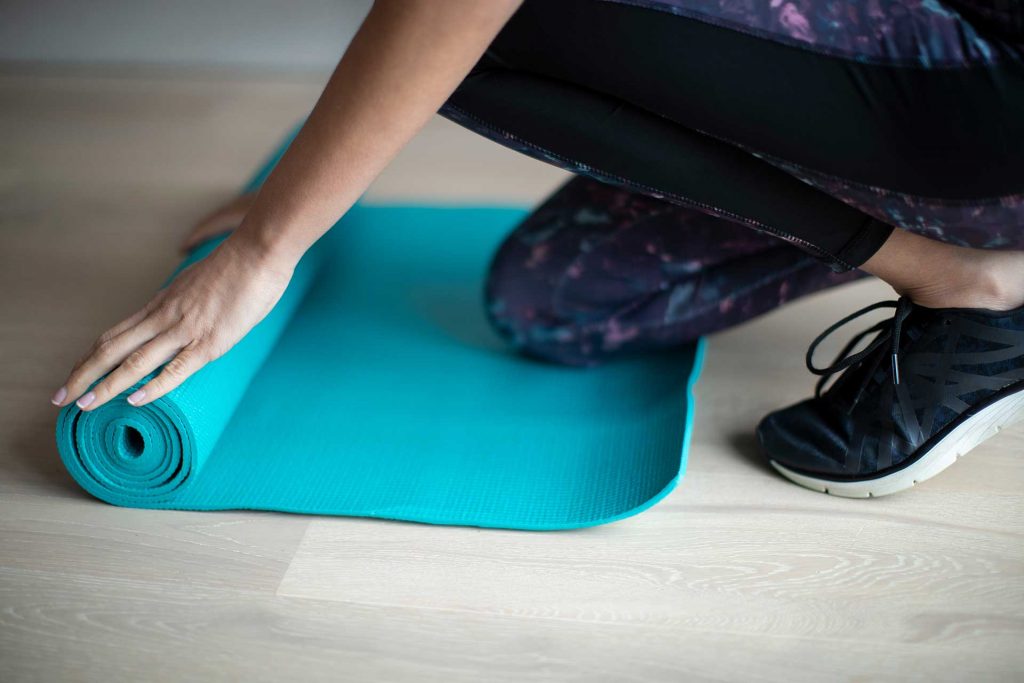Harry Rogers is the Clinic Supervisor at the Sports Ready Clinic, based at Medway Park as part of the School of Sport and Exercise Science.
During this time, many of us are at home due to COVID-19 and so our exercise routines will need to change. It is important to maintain an active lifestyle, as long as you’re feeling well.
Keeping active during isolation doesn’t just mean following a high intensity workout video on TV. If an activity allows you to minimise sitting for too long and increases your heart rate, then it will likely benefit you both physically and psychologically.
Why you should exercise when you’re in isolation
Being active during this time can be beneficial when it’s easy to sit at your desk or on the sofa for large periods of the day.
Keeping active during isolation will:
- improve your quality of sleep
- improve your mood and reduce stress (by increasing levels of endorphins)
- promote fun and togetherness with others
- increase your self-confidence and sense of achievement
- reduce stiff and restricted joints and muscles (from all of that sitting!).
Exercising regularly will:
- help you to maintain a healthy bodyweight (alongside a balanced food intake)
- increase your circulation and lower your resting heart rate
- reduce your risk of chronic diseases (eg Type II Diabetes, Cardiovascular Disease, Cancers)
- increase your bone density
- improve your muscle strength and breathing efficiency.
- reduce your risk of depression and anxiety.
If you feel unwell or show any symptoms of COVID-19, do not continue with your exercise routine as this can increase your symptoms.
What type of exercise should I do?
Simply, you should do a type of exercise or activity that you enjoy.
At the time of writing, government rules state everyone can complete one session of exercise outside each day.
Enjoying the sunshine and going outside for a brisk walk is a great way to increase your blood flow and your oxygen intake to your working muscles.
Moderate intensity activities could also include cycling, gardening, house work, active games, dancing and playing on the Wii.
Vigorous intensity activities include stair climbing, running, playing football in the garden, following a Joe Wicks HIIT (high intensity interval training) video.
Stretching exercises are important to reduce the risk of muscle tightness, from poor posture, helping an overall reduction of tension and stress.
Bodyweight and resistance exercise is another method that has great benefits including reducing your risk of osteoporosis. This can include gym exercises and carrying heavy shopping bags.
How long do I need to be active for each week?
Current UK recommendations are to be active for at least 150 minutes per week through moderate intensity activities. Alternatively, at least 75 minutes per week through vigorous intensity activities or a combination of both.
Alongside one of these, resistance training on two days per week is recommended. If you’re new to any type of exercise, my recommendation would be to increase the duration and intensity of an activity each week rather than each session.
I normally participate in a sport, what can I do during isolation?
This is an ideal period to spend time on reducing potential physical risk factors that can cause injury during a sport or activity. Injury prevention exercises are aimed to achieve this.
For example, during running if your knee is excessively unstable (Knee Valgus), this can increase your risk of certain knee injuries through these structures being continuously stressed.
However, strengthening your hip muscles (eg Gluteus Maximus and Medius) can reduce this knee movement and this risk of injury, subsequently improving performance.
To see my examples of injury prevention exercises, please follow @srckent on Instagram.
Top five tips for exercising in isolation (if you’re feeling well)
- Make your chosen activity part of your daily routine, at the same time each day.
- Don’t exercise alone, make it a family activity or with friends over video call.
- Increase the duration or intensity of the activity each week rather than each session, if you’re new to a certain type of activity (eg HIIT).
- Follow bodyweight workouts, Pilates classes or stretching routines through online services.
- Finally, have fun!
Post your own exercise in isolation and tag us #unikenthealthyselfie
Harry Rogers is the Clinic Supervisor at the Sports Ready Clinic, based at Medway Park as part of the School of Sport and Exercise Science. He is an experienced Sports Therapist and Strength and Conditioning Coach.
Harry oversees the student-led Injury Clinic where our Sports Therapy & Rehabilitation students gain hands-on experience. Services open to the public include injury assessment, treatment & rehabilitation, injury prevention plans and sports massage. Please see our website: https://www.kent.ac.uk/sport-sciences/facilities/sports-ready-clinic

